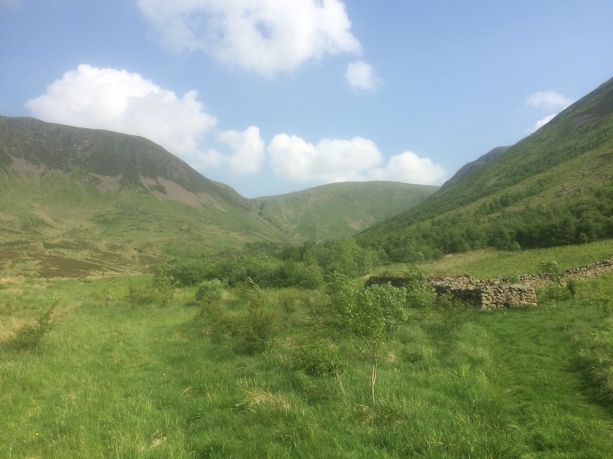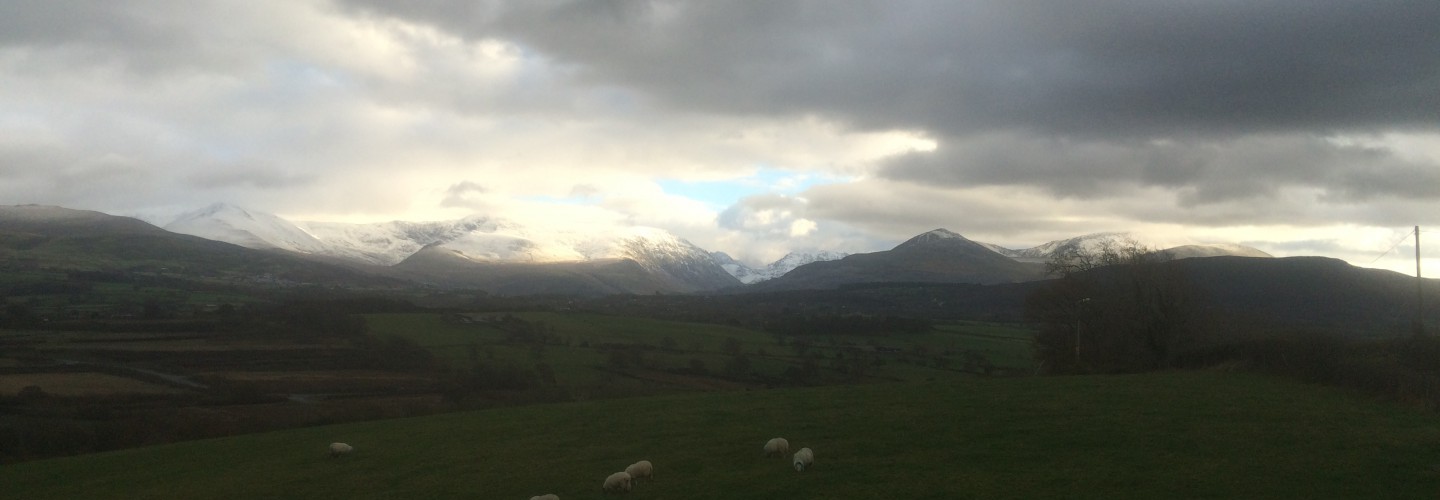Here is my dissertation submitted for the MSc in Agroforestry, Bangor University, September 2016.
Rewilding Discourses:
Evaluating different discourses of rewilding amongst land-use stakeholders in the UK
Abstract
Rewilding- the restoration of natural processes, sometimes including animal reintroductions – is drawing increasing popular and academic interest as a radical approach to conservation and land management, but is a plastic term with contested and sometimes conflicting definitions. Popular polemical presentations of rewilding have contributed to raising awareness of issues in current conservation policy, which focusses on maintaining specific habitats in a steady-state. At the same time, conflict and controversy has been created as existing land users perceive themselves to be under threat from a new movement to rewild the landscape.
A series of 18 semi-structured interviews were conducted with a range of stakeholders from Wales and Scotland including members of rewilding NGOs, the farming community, and professional ecologists, to answer the question:
“What are the discourses of nature and the environment that both inform and challenge rewilding projects in the UK?” and the subsidiary question:
“Why do people associate with and reproduce these different discourses?”
Significant differences, as well as agreements, were discovered between respondents. Reintroduction of carnivores such as wolves and lynx to Britain was generally deemed unrealistic in the short term. There was also broad support for the role farmers are playing to increase biodiversity and habitat under existing agri-environment schemes, and general agreement that such schemes need revising to facilitate greater integration of food production and conservation.
Divergent perceptions of current land management were expressed, a key difference lying between the value ascribed to culturally and naturally produced landscapes. Amongst rewilding advocates there was a lack of distinction made between romantic desires to return to a pristine “wilderness” and the move towards “wildness” as a process.
To move forward, the rewilding movement needs to clarify its goals of restoring natural processes rather than attempting to return to a historical baseline. Greater mediation and bridge-building is required between all stakeholders.

Introduction
Rewilding has been defined as a process
“to restore self-regulating ecosystems, with a strong emphasis on the role of top-down control of ecosystems by large predators.”
(Soule and Noss 1998).
A discourse has been defined as “groups of statements that structure the way a thing is thought, and the way we act on the basis of that thinking” (Rose 2001 p.136).
Public and academic interest in rewilding has increased rapidly in recent years, with multiple discourses emerging around the term in both academic and public forums (Lorimer et al 2015; Svenning et al 2015). In the US, public interest has been galvanized by the relatively high-profile reintroduction of wolves to Yellowstone national park (Ripple and Beschta 2004). In Europe, the NGO Rewilding Europe, initiated in 2011, now has 43 member projects from 18 countries, covering 3.7million hectares of land at some stage of the process of rewilding (Rewilding Europe 2015). The charity Rewilding Britain, inspired by George Monbiot’s book Feral (Monbiot 2014), was established in 2015, with the stated aim of establishing three core areas of rewilded land of 100,000ha each by 2030 (Rewilding Britain 2015).
Romantic ideals and the appeal of a novel form of radical conservation has so far left collation of a strong scientific evidence base lagging behind (Corlett 2016). This has lead to diverse definitions of rewilding which has become a plastic term, with multiple interpretations (Jørgensen 2014).
Rewilding has been as a holistic process for ecological restoration and resilience (Monbiot, 2013, Jepson and Shepers 2016) and a tool for delivering ecosystem services as part of a suite of technologies for land management (Navarro and Pereira 2015). Other researchers have cautioned about unintended consequences and over-reach from expectations about what rewilding can achieve (Nogués-Bravo et al 2016), while more traditional land users may see their more conservative values threatened by land-use changes demanded by rewilding (Schnitzler 2014, Rebanks 2015).
Beyond its role in conservation, rewilding is also proposed as a remedy for social and psychological problems considered to be part of a “modern malaise” brought on through industrialization, consumerism and loss of contact with the natural world (Taylor 2004). By contrast, ecomodernists, while acknowledging the therapeutic benefits of contact with nature, see rewilding as something that is facilitated by more modernization, with increasingly intensive and efficient energy and food-production technologies potentially freeing up more land for wild nature (Lewis 2015).
There is an increasing recognition by ecologists and conservationists that habitat and biodiversity protection are as much social issues as ecological ones, which is reflected in the rise in popularity of inter-disciplinary research (Moon and Blackman 2014). Different groups such as farmers, hillwalkers and conservationists may hold very different values concerning how they feel the countryside should be used. Within rewilding itself, differing interpretations could lead to widely differing policy outcomes. Following this understanding, this dissertation sets out to address the research question:
“What are the discourses of nature and the environment that both inform and challenge rewilding projects in the UK?”
and the subsidiary question:
“Why do people associate with and reproduce these different discourses?”
Related concepts such as “nature” (Proctor 1998), and “wilderness” (Oelschlaeger, M. 1991, Cronon 1996), as well as environmental issues such as climate change (Nisbet 2014) and wind farm development (Woods 2003) have been subjected to similar analysis to reveal the sometimes hidden or unconscious meanings underpinning such terms, including deep-rooted historical and cultural associations. To apply a similar analysis for “rewilding”, the method of semi-structured interviews was chosen to attempt to uncover and understand meanings which otherwise may not be directly observable or identifiable through more quantitative methods such as formal surveys (Moon and Blackman 2014).
Rewilding strategies have implications for a whole range of public policy issues, in particular the future of farming and conservation policy post-Brexit, and with debates becoming potentially more fractious between competing interests, it is becoming increasingly important to find forums in which different perspectives are voiced and listened to.
The complete dissertation can be downloaded here:
strouts-g-2016-rewilding-discourses

Good stuff Graham
‘There is an increasing recognition by ecologists and conservationists that habitat and biodiversity protection [and enhancement] are as much social issues as ecological ones…’
My insert – regulation as a ‘stick’ generally does not encourage the ‘carrot’ of creating more habitat.
We need more neutral platforms and non-partisan engagement by the gallon for this to get anywhere!
Best
Rob ‘RW17’ Yorke
http://www.robyorke.co.uk
ps would love a print out to refer to re my hosting conversations with farmers et all
LikeLike
thanks Rob! and thanks again for your invaluable contributions. I look forward to lots more discussions in the future.
LikeLike